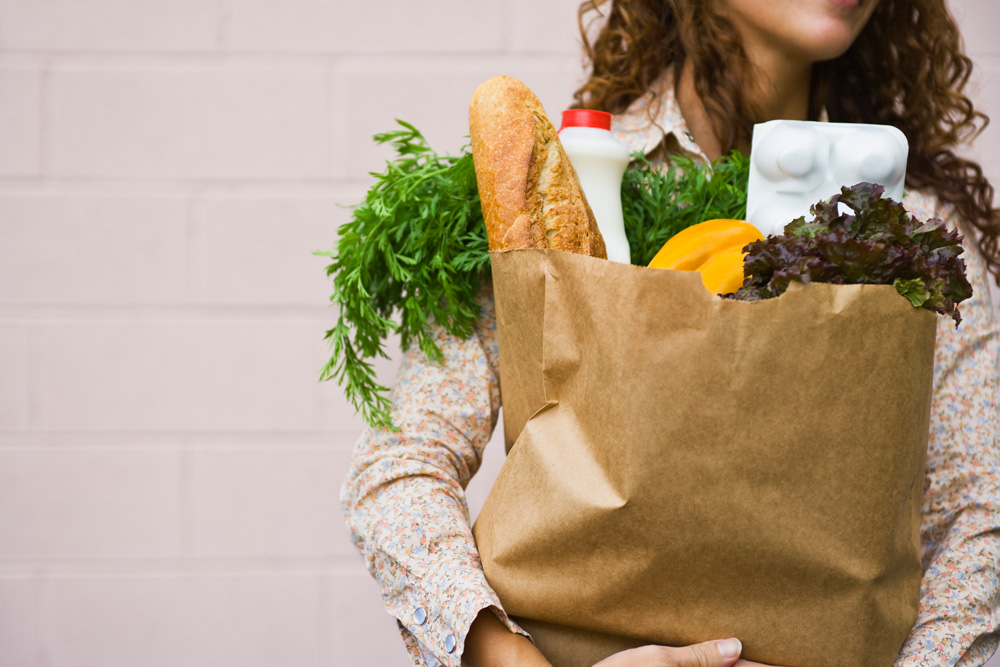
Just jumping in? We’re talking all about budgeting these last couple weeks of May, in preparation for my free, 30-day Healthy Mama on a Budget Challenge, starting June 1st.
What is the 30-day Healthy Mama on a Budget Challenge?!
It’s 30 days of keeping track of our grocery receipts so we can best utilize the money we have to eat in the way that feels the best (without overspending!). We will be:
- Creating a monthly + weekly budget
- Planning our meals accordingly
- Tracking our weekly spending
- Avoiding unnecessary extras
- Getting back on track with our grocery budget before the start of summer
Are you in? It’s 100% free- sign up here and get my newly revamped Healthy Mama on a Budget e-book fo’ free and join us!
Ok, onto today’s budget-y subject: my BEST practices for sticking to your budget.Oh yes. And my expertise? It isn’t as a finance expert, that’s for sure (though my friend Paige is- she’ll be sharing with us in the challenge!).
It’s as a mama of two and oh, a little job I used to have as a personal chef. And in case any of you have never had a personal chef, it often works like this: I got paid hourly for my time, and they paid for the groceries. I gave them a reasonable estimate and they agreed to it, so if I went over (by more than a reasonable amount)– well, that cost got eaten- by me and my business. So food budgeting has always been a thing for me and I’ve carried what I’ve learned into my life as a busy mama who, like many of us, is on a budget.
But here’s the thing: eating well does NOT have to break the bank, and I want to show you how.
Before we dig into tips, if you’re wondering how I budget, click here. If you’re wondering how to decide how much you should spend on groceries per month, click here. Now onto the tips!
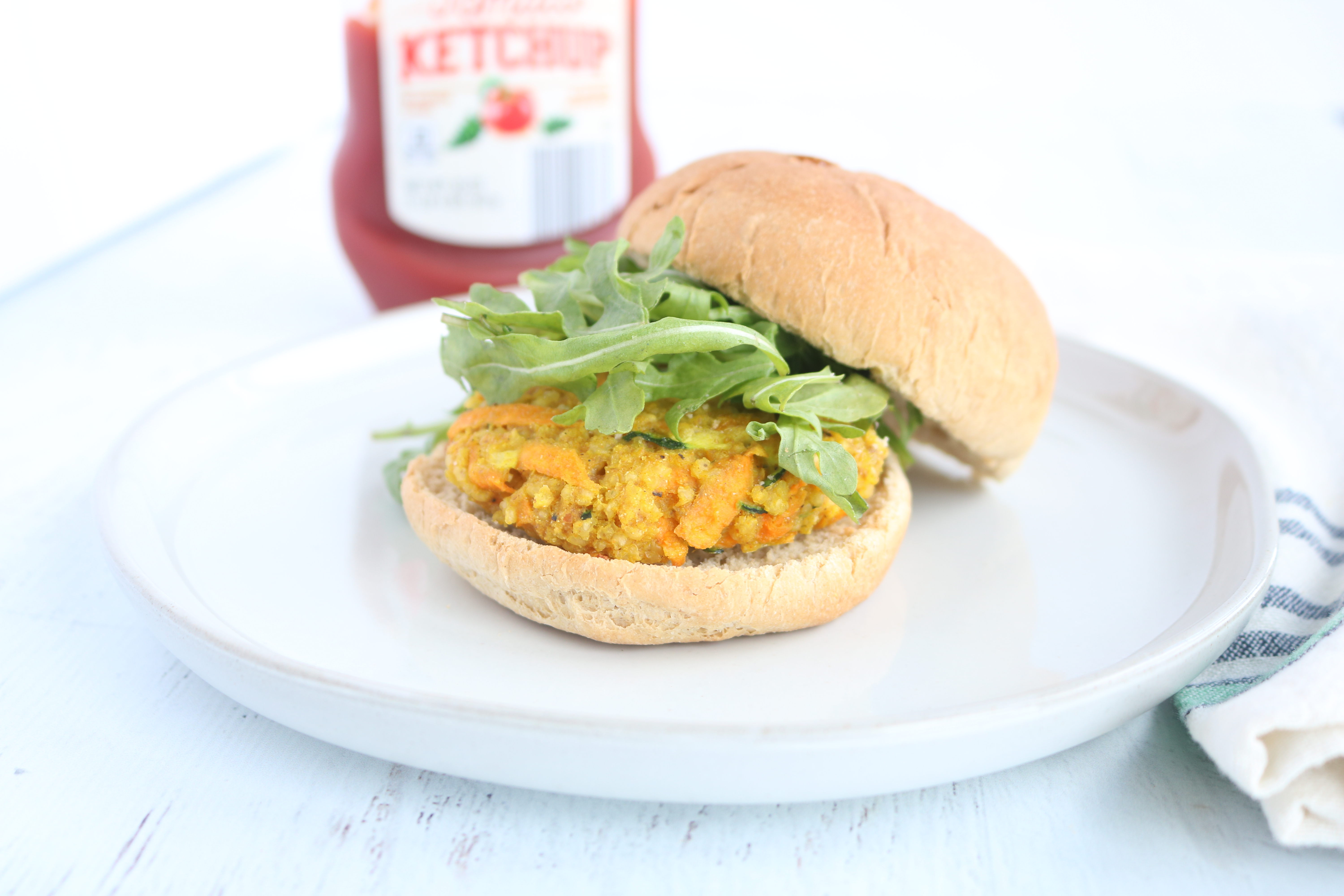
Tip #1: Ditch the packaging
You PAY for the packaging. Truly- the more convenient the item, often times, the more packaging (individual packages of snacks, frozen meals, pre-cut veggies and fruit, etc). Also, often, the more expensive. Now, yes- there is an exception to this rule when it comes to some low-quality inexpensive packaged foods. But I want you to consider nutrient density, here. When looking at the most nutritious option your family would choose, which is less expensive for the amount you get? You’ll notice pre-cut and sliced butternut squash is almost twice the price of getting the squash and slicing it yourself- you can get an entire squash for the cup and a half you’d get- for the convenience. So yes, it’s a little more work on your hands- but it’s worth the savings, in my opinion.
Tip #2: Buy basics in bulk
In the same vein, buying the basic pantry items you use again and again (rice, quinoa, nuts, beans, lentils, coffee) in bulk saves packaging, and therefore money. We like using reusable containers, and this also lends us the convenience of being able to make quick meals often with what we have on hand, without needing to run back to the store (see tip #6). We store everything in mason jars and airtight OXO containers.
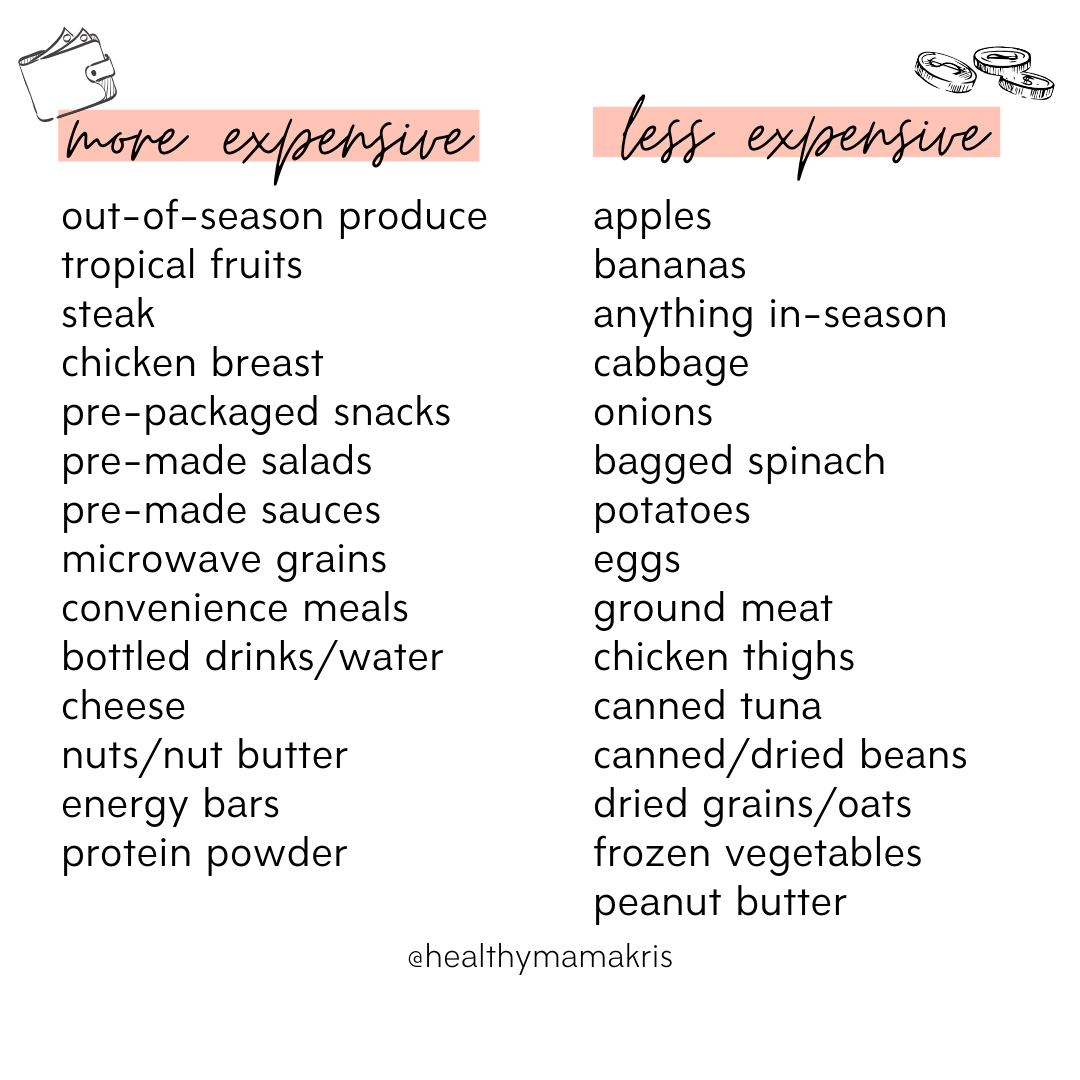
Tip #3: Choose lower-priced meats and veggies
When you’re on a strict budget, it’s probably not the time to stock up on avocados, starfruit and lamb chops. The less available, less purchased and more exotic ingredients tend to fall under the higher priced category, but this also goes for items like red bell peppers vs. carrots and steak vs. ground meat. Take some time to consider the least expensive produce and meat in your area- there’s no need to sacrifice quality if you prefer organic or grass-fed, choosing less expensive cuts will offset the cost quite a bit here (I also like services like Butcherbox that provides high quality meat at bulk store prices).
Tip #4: Shop in-season
This is probably the BEST way to save on vegetables and fruit- even better if you can get them directly from the farm using a CSA (Community Supported Agriculture) program. When food is in abundance, the price goes down. So, when it’s apple season, you’ll see organic apples jump from $2.99/lb to $.99/lb. It’s simple: buy the apples while apples are in season and the oranges while the oranges are in season. The Seasonal Food Guide site is a great way to search for in-season fruits and vegetables in your area. https://www.seasonalfoodguide.org/
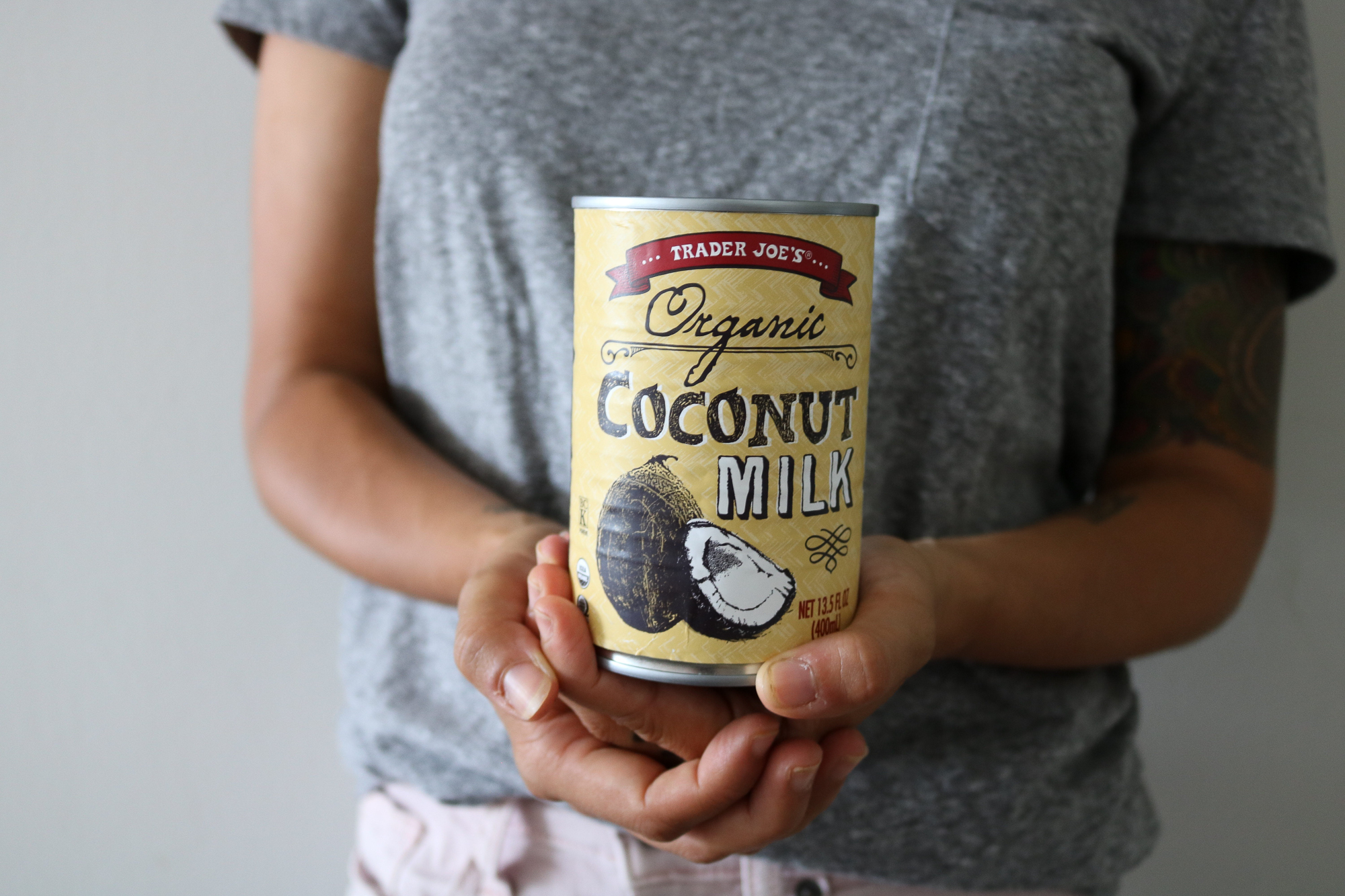
Tip #5: Choose your stores wisely
It pays to shop around! Now, you don’t need to shop all around town for the best deals every time, but compare prices (there is a price comparison chart in the Healthy Mama on a Budget e-book you’ll get when you join the free budget challenge) at the main stores you go to (or maybe one you don’t yet– I love Trader Joe’s, Aldi and Market Basket for their unbeatable prices on high quality food, even Super Target or Super Wal Mart often have great prices on high quality food) and choose 1-2 to shop at for your main groceries. Typically I’ll take one shop a month at a store that’s a little further away for specialty ingredients (for me, this is Whole Foods or Trader Joe’s) and the rest of the time I shop at Aldi, right around the corner.
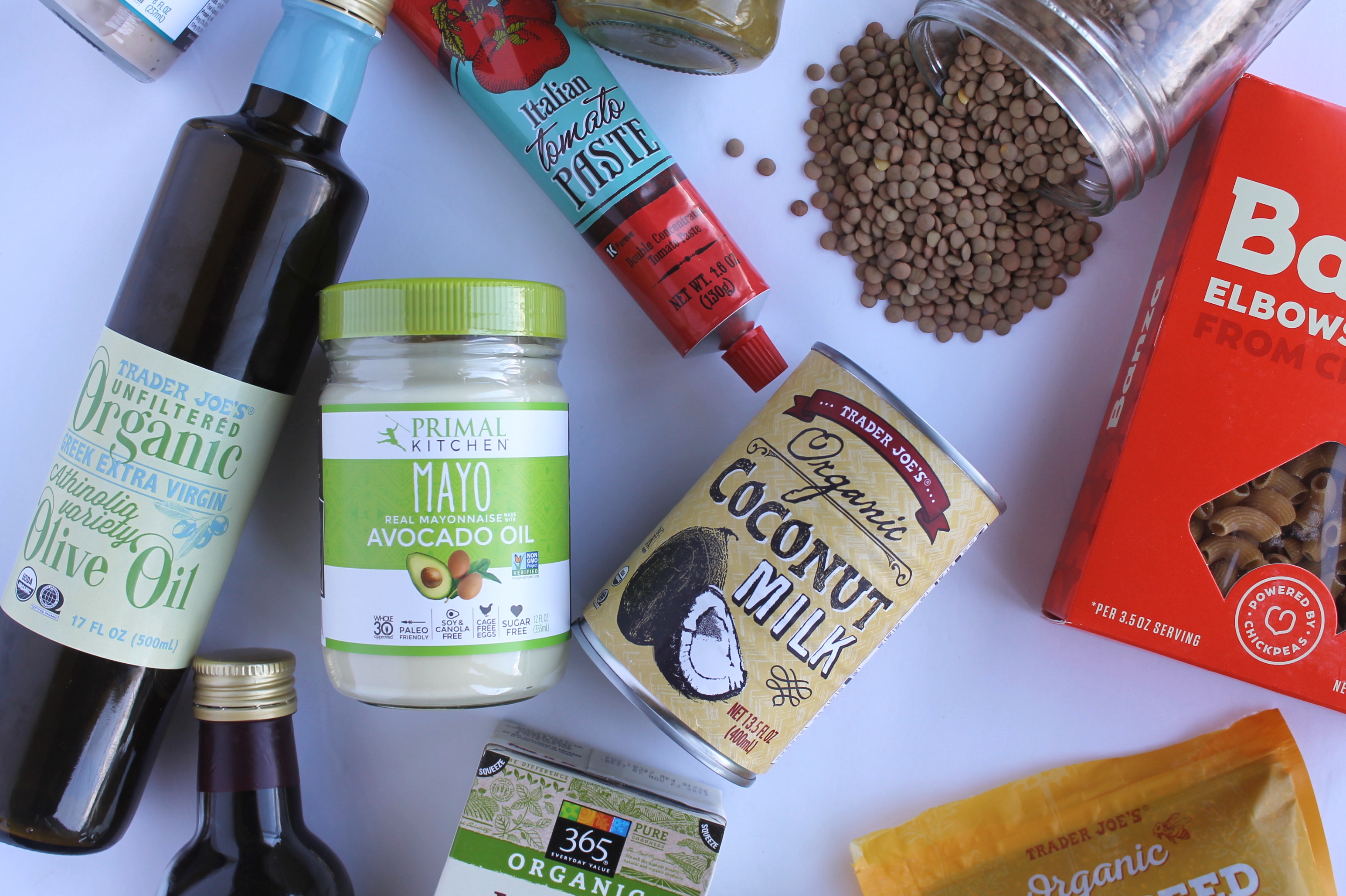
Tip #6: Shop your pantry, fridge and freezer before you plan
This is so simple, and yet so key- shop your OWN house before you head to the store. What do you have on hand you can use for meals this week? Try searching Pinterest or Google for ‘lentil recipes’ if nothing comes to mind. This is also why I love using a family favorites list to keep a list of our favorite recipes on hand to refer back to when I need some inspiration.

Tip #7: HAVE A PLAN
Ok, you knew I was going to say this– but saving money on groceries starts when you have a plan. Ever head to the grocery store with no plan and leave with a cart full and no real meal ideas? When you have a plan, you can write down the ingredients you need- and STICK to the list. When you overbuy- especially produce, and don’t use the ingredients we buy- think about it as throwing away money (which it is!).
Tip #8: Avoid getting sucked into sales
Where sales CAN be money savers, they’re only money savers if you’re buying food you’ll actually eat in a reasonable time. I find it helpful to browse the sales flyer first, so I’ve already seen the sales, I know which items are worth it to stock up on (referring to that price tracker list can be really helpful again, here). Remember sales come back- if you don’t need that item and/or you’re not going to eat it in a reasonable time (i.e. before the next sale comes around in 4-6 weeks) it’s not worth it.
Tip #9: Pay with cash
I know many people are resistant to using cash for purchases- it’s just not convenient! But for many, actually taking cash out of the bank, keeping that exact budget in an envelope and taking it to a store, and paying WITH the actual cash can be a reality check about how much you’re actually spending and what you have left. It’s impossible to go over your budget when you’re paying with cash- or you can see that you’re cutting into next week, or another area. Try it- it’s powerful, especially with groceries- as it will make you think twice about those extras you’re throwing in your cart.
Tip #10: Utilize cash-back apps like Ibotta. This one isn’t sponsored- promise, but I have been LOVING using cashback deals from Ibotta. The caveat here is the same as point 8- only buy what you actually NEED and are planning on buying, or else it’s a recipe for over-buying!
Tip #11: Purchase store brand items
The reason stores like Aldi and Trader Joes are often so inexpensive is they utilize store-brand nearly all of their items. These items are often no different than name brands, but without the brand behind the label, they can charge less and you can save more.
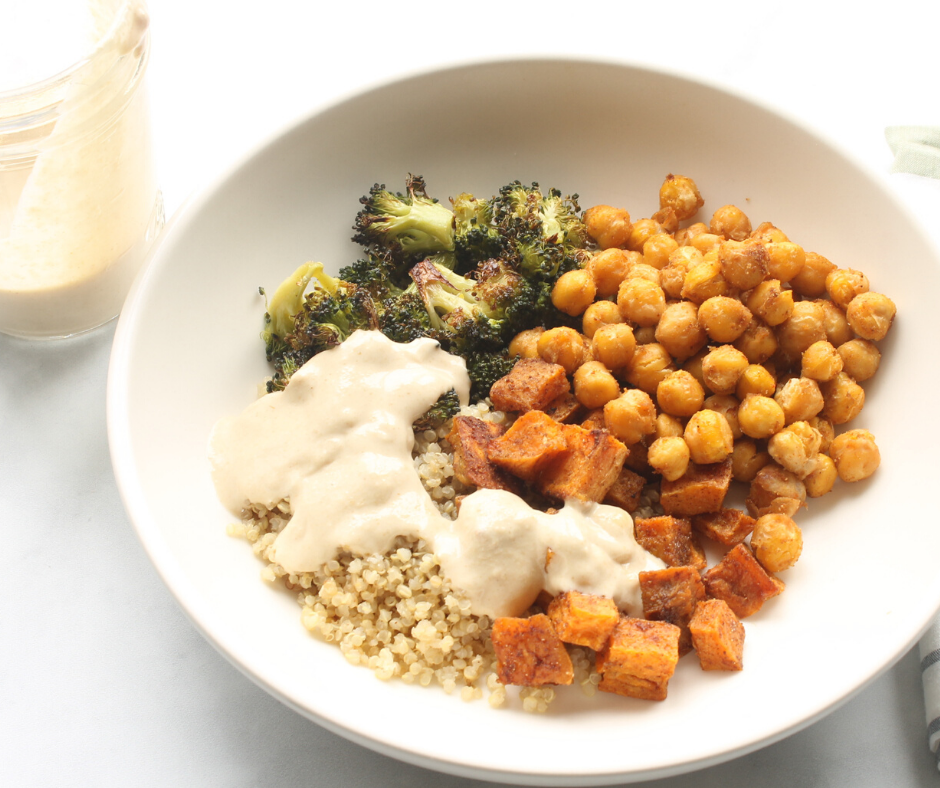
Tip #12: Eat more meatless meals (and/or stretch your meat)
If you’re already a vegetarian- yay, you’re already likely saving money (unless you’re relying entirely on takeout and/or convenience foods, see Tip #1). Meat-especially high quality- is expensive. So how can you cut back, one or two meals a week and save yourself some cash? Remember meatless doesn’t mean protein-less; beans, legumes and eggs are all inexpensive sources of protein.
Tip #13: Cook once, eat twice (prep to avoid takeout)
In the same vein, stretching the meat you use or making extra items like beans or grains helps to stretch a meal at a lower cost. If you can make a big pot of soup, stretching with lots of inexpensive vegetables, broth and pasta or rice and eat it for two meals instead of cooking two days in a row with new ingredients can save a ton of money- and avoid running out for takeout. Prepping ahead, especially when you anticipate a busy night, can be a huge money-saver.
Tip #14: Learn to make it homemade
I know this isn’t the most glamorous tip, but it is an important one. MANY of the items we have become so accustomed to buying in-store we can make at home, easily. Things like salad dressing, almond milk, mayonnaise, bone broth, bread, pizza crust, even many snacks like cookies, energy bars, trail mix and crackers- to simple items like using dried beans instead of canned, can save money- and give back to the environment with the lack of packaging. Win-win. This doesn’t need to be all-or nothing, or an only-homemade shift. Start with one item you feel you can make at home, and go from there. Stop when it feels overwhelming. This needs to work for you- there is nothing wrong with convenience, it’s all about doing what you can top shop within your budget.
Tip #15: Track while you shop
Perhaps the most annoying and yet revealing tip, is to track while you shop. Track the prices of what you’re buying, much like paying with cash, can be a HUGE wakeup call as to why your grocery budget is through the roof. Throwing in this or that adds up- so add it up and see where you’re at with your staples, and then the food you need for meals- from there, if you have extra- go for it! Budgeting and shopping smart is simply a habit to be built. You can still leave room for fun extras, so long as it fits your budget!
Now that you have ALL my best tips, are you ready to join us for my free 30-day Healthy Mama on a Budget Challenge?! Click here to enter your name and email and you’ll get instructions and my Healthy Mama on a Budget e-book sent to your inbox right away.

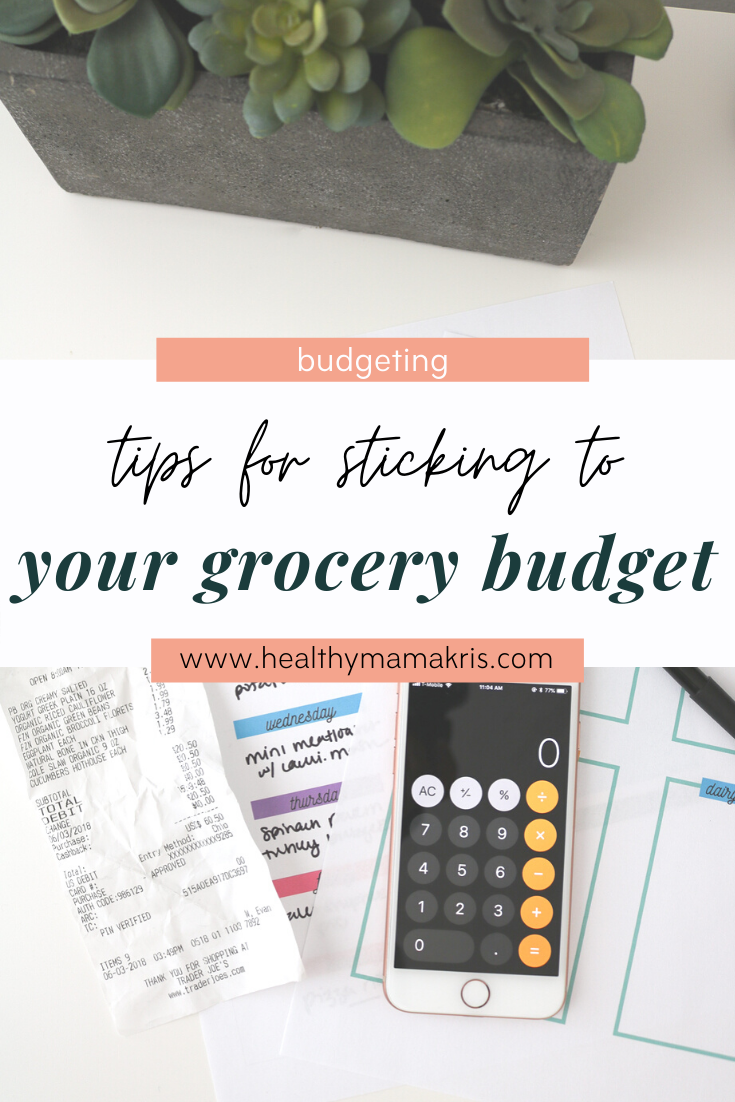
Leave a Reply Cancel reply
5-day series: how to get started with meal prep for easier meals
free email series
©️ 2025 Kristin Dovbniak for Healthy Mama Kris | Template by Maya Palmer Designs | Privacy Policy | Terms
